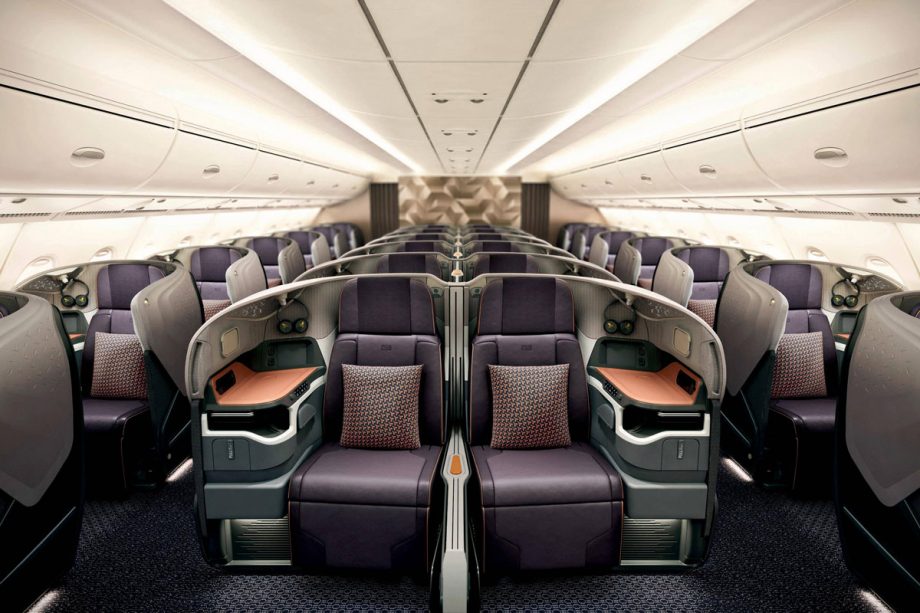The travel industry had its handbrake yanked in 2020.
Out of the smoke, however, experts are optimistic we will see a number of innovations that will improve the travel experience.
One such trend is the 'no touch' plane cabin – a design concept which forms part of the broader phenomenon of 'touchless travel.'
'Touchless travel' refers to everything from automatic-flushing toilets in airport and plane bathrooms to automated scan-and-board gates, controlling your inflight entertainment system from your own phone or tablet, and more.
RELATED: The Bizarre New Reality Of Flying Business Class To Europe
Bligh Williams, Group Director at Workplace Services Australia (a specializing Workplace Services consulting company), who has been involved in a number of major transformation and transition projects for both the private and public sector, told DMARGE, "No touch has existed in many built environments by using sensors (e.g. taps and flushing) in bathrooms, or contactless lockers [which work off bar code readers or blue tooth on you mobile phone]," for many years now.
"This type of technology should be able to be adopted in the aviation sector and on a wider scale through a variety of built environments."
"With or without a vaccine people have become more hygiene conscious and [have developed] increased spatial awareness," Williams added.
This fits in with what Daniel Baron, who operates LIFT Aero Design, an aircraft cabin design studio with offices in Tokyo and Singapore, recently told CNN: "Touchless travel promises peace of mind."
According to Baron, 'touchless travel' is not just about hygiene but "the state of not having to even think about 'clean,' made possible by technologies and processes to mitigate angst along the journey."
It also involves, CNN reports, not just touch-free but also 'less-touch' and 'fewer-touch' innovations, with the most promising cabin area for an overhaul being plane toilets.
"It is common knowledge in the cabin interiors industry that even before Covid, many passengers hesitated to use lavatories out of negative perception; in other words, having to touch dirty surfaces," Baron told CNN.
"We have seen incremental improvements over the past decade, mostly touchless faucets and toilet lids and flush buttons. Next will be soap dispensers and hand dryers, plus the doors and locks."
Some of this will be automated (think: sensors) but some of it will be about redesigning physical implements (think: doors or bins you can open with your feet).
This revolution faces a number of obstacles to overcome, such as safety regulations (think: electrical load testing, electromagnetic interference and general safety testing). However, experts are hopeful passengers' shifting priorities may help get it over the line.
"The technology is ready," IAMA Managing Director Nicole Noack told CNN. "Before Covid-19, the return on investment was the key challenge. But with the new normal, those technologies might become crucial to have passengers trust again in air travel."
RELATED: Business Class Passenger Reveals 'Pandemic Safety Feature' Missing From Economy
Practically every airline (from Qatar Airways and Qantas, to Singapore Airlines, just to name a few) has acknowledged the importance not just of limiting passenger-crew contact and having excellent hygiene this year, but promoting the perception that there is limited passenger-crew contact and excellent hygiene.
In other words: there may be hope for touchless toilets yet.
Read Next
- New Invention Could Change Economy Travel Forever
- Spoils Of Being The Only Business Class Passenger On A Covid Flight
Subscribe to the DMARGE newsletter
Follow DMARGE on Instagram
Follow DMARGE on Facebook
The post ‘Touchless Travel’: The Aviation Design Trend Ready To Explode appeared first on DMARGE.
from DMARGE https://ift.tt/37KWV1o








0 comments:
Post a Comment